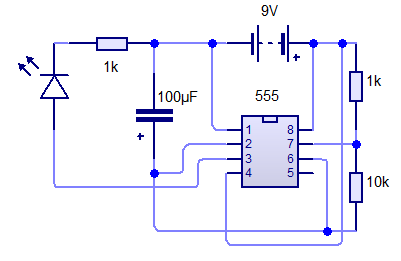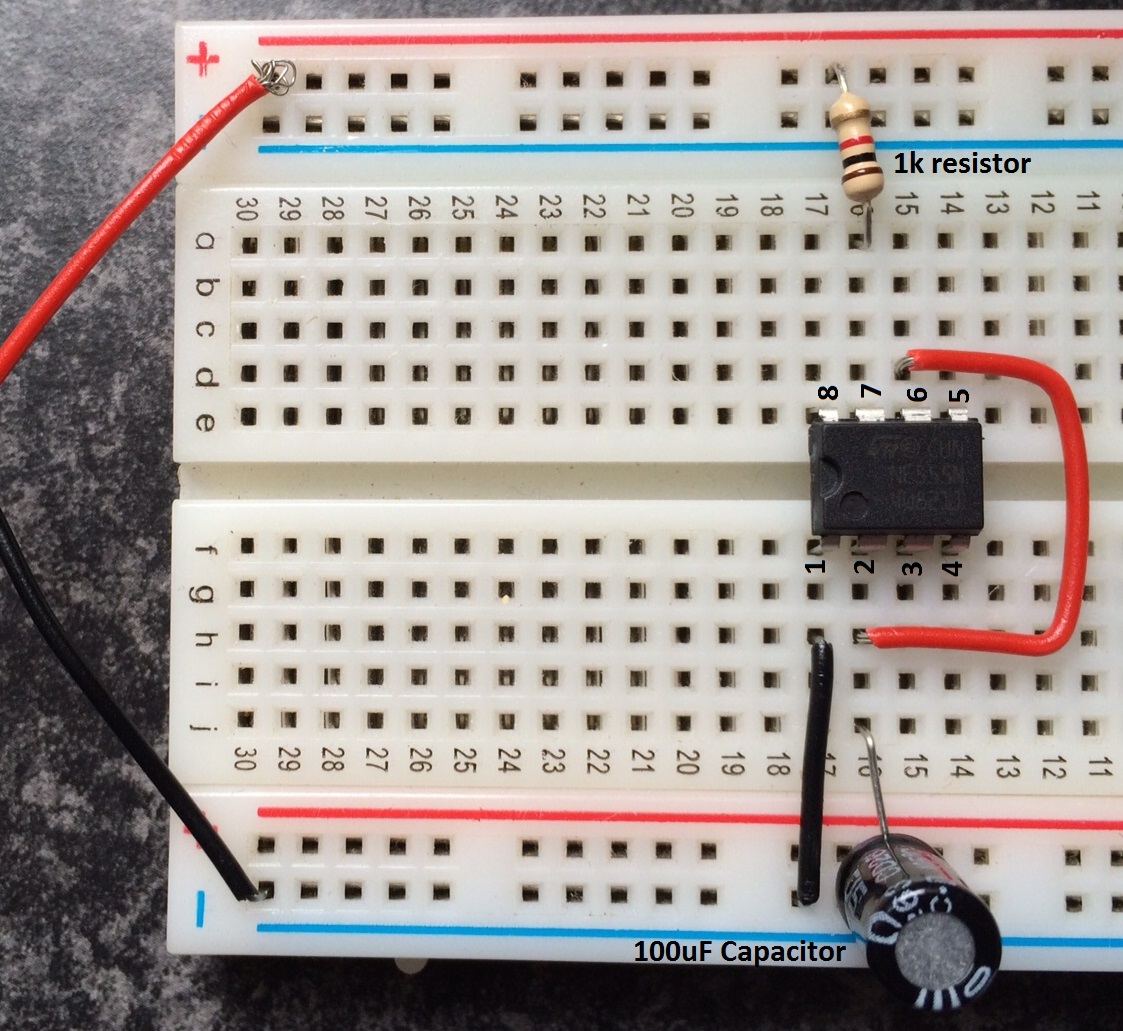An introduction to Breadboards
1 The 555 timer
Learn It
- Your newly acquired breadboard skills will come in handy over the next few years. Being able to quickly build and test new circuits will allow you to experiment and change components quickly to help you invent things.
- In this lesson, we'll look at your first IC (short for Integrated Circuit).
- ICs are complete circuits that are miniaturized so that they can be plugged straight into lerger circuit designs. We'll be using a 555 timer; a chip released in 1971, which is still incredibly popular today.
- Their popularity is such that it is estimated that over a billion of these ICs are manufactured every year!
- The 555 timer allows circuits to conveniently use time to achieve all sorts of effects.
Try It
- This is the circuit you're going to build.
- Start by getting a 555 timer IC, and some red and black single-core wire.
- Look at your chip. ICs like the ones you'll use have a notch at one end (just like the notch in the diagram above) to help you locate which way up it goes. They also normally have a circle in one corner to help you locate pin (leg) 1. Place your 555 timer so that the notch is pointing to the left.
- Tip: Build the circuit slowly. While the circuit looks complex, as long as you focus on one leg at a time, the problem becomes more managable. I'd start with pins 1, 8 and 4, for instance.
- Tip: Keep your wires neat. While its tempting to quickly throw wires on the board to solve it quickly, this makes it likely that you'll knock something loose as you get more components on the board.
- Tip: You don't need to pack all the components into the smallest possible space. You've got the entire board, after all.
Badge It - Silver
- Create the board to the stage shown above, and add the wiring to pin 4, 8 and 3.
- Take a photo of your progress and upload it.
Badge It - Gold
- Complete a working 555 timer breadboard.
Badge It - Platinum
- Modify the circuit to blink more quickly.
- You may be able to guess what to change, but you'll likely need to do a little research online to do this.


